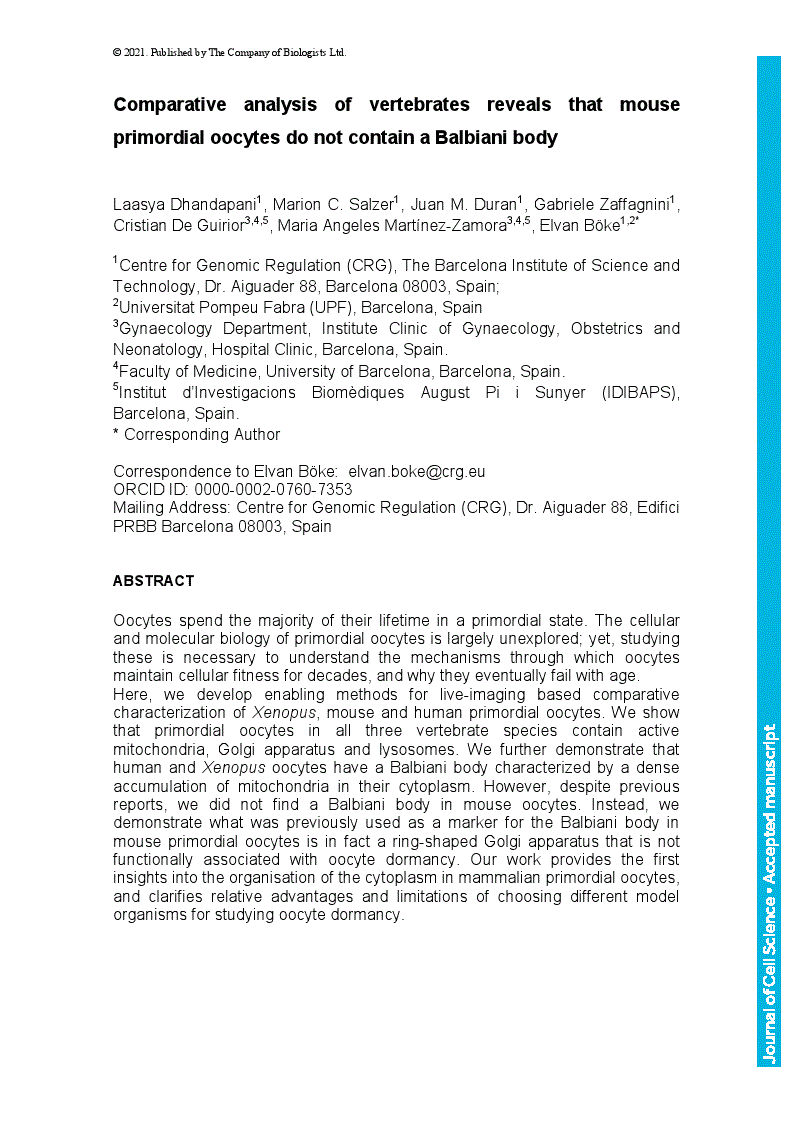Oocytes spend the majority of their lifetime in a primordial state. The cellular and molecular biology of primordial oocytes is largely unexplored; yet, studying these is necessary to understand the mechanisms through which oocytes maintain cellular fitness for decades, and why they eventually fail with age.
Here, we develop enabling methods for live-imaging based comparative characterization of Xenopus, mouse and human primordial oocytes. We show that primordial oocytes in all three vertebrate species contain active mitochondria, Golgi apparatus and lysosomes. We further demonstrate that human and Xenopus oocytes have a Balbiani body characterized by a dense accumulation of mitochondria in their cytoplasm. However, despite previous reports, we did not find a Balbiani body in mouse oocytes. Instead, we demonstrate what was previously used as a marker for the Balbiani body in mouse primordial oocytes is in fact a ring-shaped Golgi apparatus that is not functionally associated with oocyte dormancy. Our work provides the first insights into the organisation of the cytoplasm in mammalian primordial oocytes, and clarifies relative advantages and limitations of choosing different model organisms for studying oocyte dormancy.








